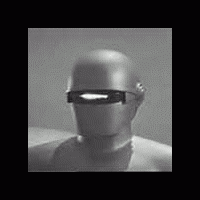المشاركات: 53
لغة: English
Bemused (عرض الملف الشخصي) 2 يناير، 2012 12:37:34 ص
I have noticed that some people say they have difficulty typing the special characters.
The following link shows how to adapt your keyboard so that you can type these characters without having to switch keyboard language layouts.
http://www.esperanto.net/veb/faq-14.html
Hope this helps.
Cheers.
P.S. I'm not sure how to post an active link, if you copy and paste the link into your browser it will work.
Chainy (عرض الملف الشخصي) 2 يناير، 2012 12:51:33 ص
Bemused:I have noticed that some people say they have difficulty typing the special characters.Any perceived difficulty will very quickly become an absolute nightmare if you follow the instructions on that page!
qwertz (عرض الملف الشخصي) 2 يناير، 2012 1:02:28 ص
Scratch (عرض الملف الشخصي) 2 يناير، 2012 1:10:26 ص
Chainy (عرض الملف الشخصي) 2 يناير، 2012 1:15:01 ص
1. For Windows computers - use Tajpi as created by Lernu member Tommjames
2. For Mac computers - use the simple to install x-system keyboard layout created by another Lernu member, Mihxil.
Or, just use an Esperanto layout ('q' and 'w' become 'ŝ' and 'ĝ'. In what order, I can't remember right now, but I'll find out). I'll get back to you on this one.
3. For Linux users, it's really easy to use the x-system via the iBus system. In Gnome 2 just click on System > Preferences > IBus (this is certainly present in Ubuntu. If not, then it can easily be installed). A box pops up asking you if you want it to start running, just click ok. Then in the panel there should be easy access to it. Go into the preferences and search for the Esperanto options.
- Or you can simply use an Esperanto-layout on the keyboard. For this, you don't need iBus - just go the keyboard settings and select Esperanto. It's easy to switch between the different layouts via the panel in Gnome 2 systems. With the new Gnome 3, I'm not sure yet.
----
Ok, that's my attempt at getting the ball rolling. Not enough details, I suppose. But, maybe I'll take some screenshots at some point to run through the installation methods - We really need to deal with this. It's not difficult at all, but so many people seem to be lost with it.
If anyone's got any other ideas, then please mention them here, or provide the link. Then we can update the info page in Lernu. The current one is not too good: Pri supersignoj
qwertz (عرض الملف الشخصي) 2 يناير، 2012 1:25:37 ص
Chainy:I full agree. Someones needs to write native Esperanto characters. Its some base uniqueness of Esperanto language. Or let it call the base sex appeal of Esperanto. Ooops.
Ok, that's my attempt at getting the ball rolling. Not enough details, I suppose. But, maybe I'll take some screenshots at some point to run through the installation methods - We really need to deal with this.

RiotNrrd (عرض الملف الشخصي) 2 يناير، 2012 2:44:05 ص
lgg (عرض الملف الشخصي) 2 يناير، 2012 5:29:42 ص
Also, most users are not comfort with uzing 3rd party software or extra keyboard layouts, they are very clunky.
We should propagate the use of Ido's or some other plain alphabet (without ugly cx/ch combinations) instead of requiring sacrifices from our potential speakers.
bluemanshoe (عرض الملف الشخصي) 2 يناير، 2012 8:03:19 ص
Go to Keyboard Layout, click on Options, and simply set the "Adding Esperanto circumflexes (supersigno)" to "to the corresponding key on the QWERTY keyboard"
and then be sure you set the "Key to set the 3rd level" to the key you'd like, I use the right-alt, seeing as I use left alt anytime I need to access alt options in programs, so my right-alt goes otherwise unused, and its within easy reach of my right thumb.
Once you've done that, you have your standard english keyboard layout, and by simply holding down right alt when you type a character, you get special version, i.e. right-alt-s = ŝ, etc.
Fenris_kcf (عرض الملف الشخصي) 2 يناير، 2012 10:33:24 ص
Since you describe a GNOME-based solution (which b.t.w. I use for myself), this doesn't only work on ubuntu.


